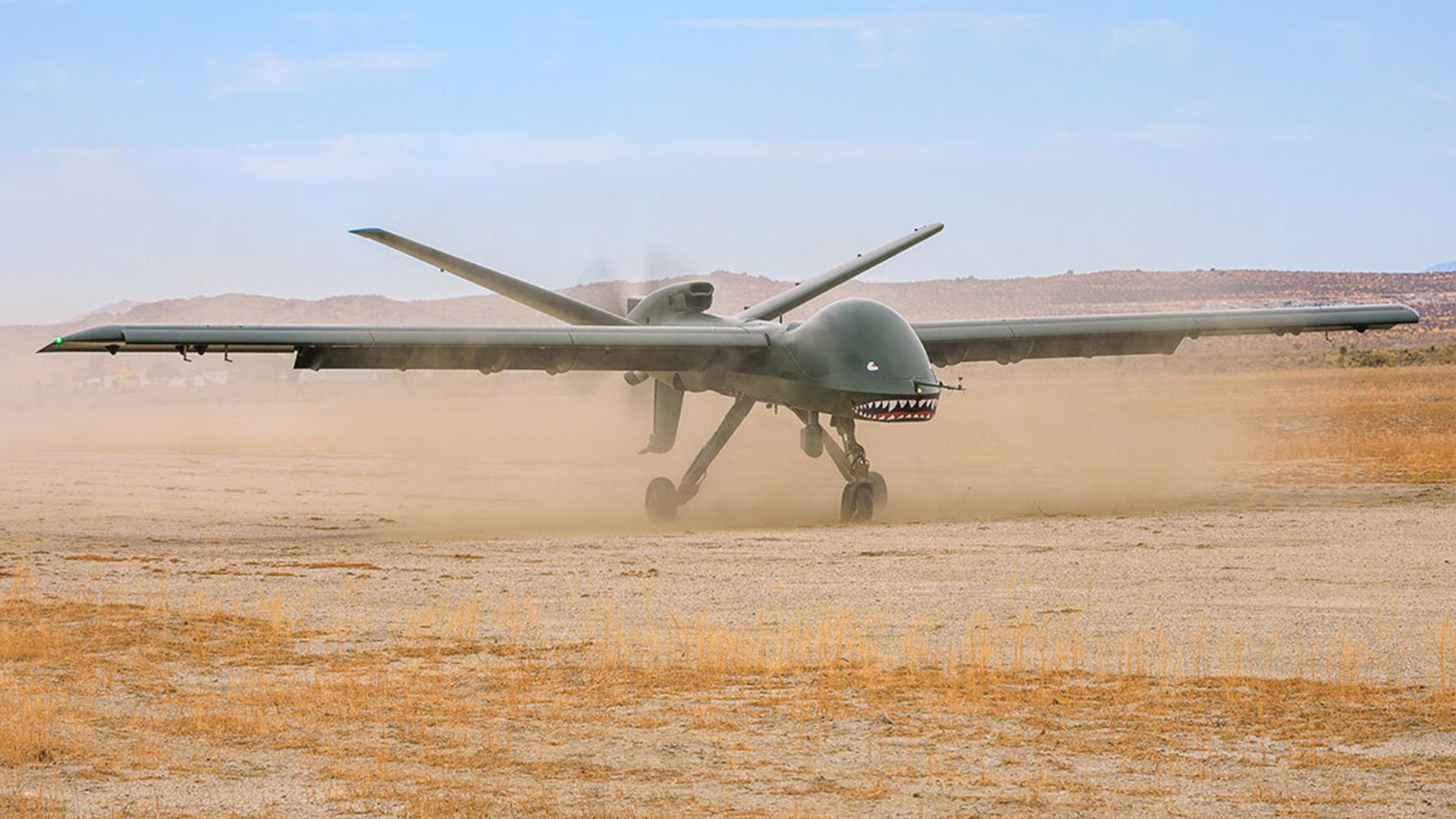
THE U.S. AND ITS ALLIES ARE PREPARING FOR A WAR WHERE RUNWAYS MAY NOT BE AN OPTION, BUT THAT DOESN’T MEAN A FLAT STRETCH OF DIRT WON’T DO.
GENERAL ATOMICS AERONAUTICAL SYSTEMS SUCCESSFULLY TESTED ITS MOJAVE UNMANNED AERIAL SYSTEM IN EARLY AUGUST. THE RUGGED EXPEDITIONARY DRONE COMPLETED SEVERAL TAKEOFFS AND LANDINGS ON A STRIP OF DIRT OUTSIDE EL MIRAGE, CALIFORNIA.
IF THE MOJAVE LOOKS FAMILIAR, IT’S BECAUSE IT’S BASED ON THE MQ-1C GRAY EAGLE AND THE MQ-9 REAPER, BOTH BATTLE PROVEN WEAPONS SYSTEMS.
THE MOJAVE IS NOT IN FULL PRODUCTION, RATHER IT’S A TECHNICAL DEMONSTRATOR SHOWCASING ITS STOL, OR SHORT TAKEOFF AND LANDING ABILITY.
THE MOJAVE IS MADE TO MIX IT UP WHERE OTHER FIXED-WING AIRCRAFT CAN’T. WITH A RUGGEDIZED AIRFRAME AND LANDING GEAR, IT HOLDS UP BETTER OPERATING FROM REMOTE LOCATIONS WITH LESS-THAN-IDEAL LANDING STRIPS.
THE MOJAVE CAN ALSO WITHSTAND THE WEATHER AND ITS IMPACTS TO A GREATER DEGREE, ALLOWING FOR OPERATION IN WHAT GENERAL ATOMICS CALLS WIDER ENVIRONMENTAL WINDOWS.
DURING FLIGHT TESTS IN EL MIRAGE, THE MOJAVE TOOK OFF IN AS LITTLE AS 586 FEET AND LANDED IN AS LITTLE AS 335 FEET. BUT GA SAYS THE TEST WAS MOSTLY ABOUT GATHERING TERRAIN FEEDBACK, SO ITS POSSIBLE THE MOJAVE IS CAPABLE OF EVEN SHORTER TAKEOFFS AND LANDINGS.
LIKE THE REAPERS AND GRAY EAGLES, THE MOJAVE IS LOADED WITH SENSORS TO GATHER INTELLIGENCE. THE 450 HORSEPOWER TURBINE ENGINE CAN KEEP THE MOJAVE IN THE AIR FOR MORE THAN 25 HOURS, GIVING ITS OPERATOR PLENTY OF TIME TO DECIDE HOW TO USE ITS PAYLOAD OF UP TO 16 HELLFIRE MISSILES OR EQUIVALENT MUNITIONS.
SINCE ITS DESIGNED TO SUPPORT EXPEDITIONARY FORCES, THE MOJAVE IS MADE TO BE MOBILE. THE ENTIRE THING CAN FIT INSIDE A SINGLE C-130. ONCE IN THEATER, THE MOJAVE CAN BE PUT TOGETHER AND DEPLOYED QUICKLY BY A SMALL CREW USING BASIC TOOLS.
THE MILITARY’S STANDARD FIXED WING, ROTARY, AND VERTICAL TAKEOFF AND LANDING AIRCRAFT CERTAINLY AREN’T GOING TO BE REPLACED BY THE MOJAVE, BUT THEY COULD BE AUGMENTED BY IT.
THE MOJAVE WOULD BE A HANDY TOOL FOR THE MARINE CORPS LITTORAL REGIMENTS IN THE PACIFIC, WHO’VE BEEN TASKED WITH TURNING SMALL, REMOTE ISLANDS INTO THE FIRST LINES OF DEFENSE AGAINST POTENTIAL CHINESE AGGRESSION.
FOR MORE UNBIASED, STRAIGHT FACT REPORTING RIGHT ON YOUR PHONE, BE SURE TO DOWNLOAD THE STRAIGHT ARROW NEWS APP, OR FIND US AT SAN.COM.







